Replacing my HTPC with a mini ITX System
by Anand Lal Shimpi on May 24, 2012 1:44 PM EST- Posted in
- Systems
- CPUs
- Intel
- Home Theater
- HTPC
- H77
- TheaterBlog
Free time is hard to come by these days. Since the beginning of the year I've hit Vegas, Barcelona, Santa Clara, New York, Santa Clara (again), Austin, Seattle, Chicago, Santa Clara (again) and Folsom. Before the end of June I'll add Taipei, San Francisco and Seattle again to the list. My travel schedule as of late has taken its toll on a number of things, one of which has been my ability to spend much time in the theater I built a while ago, inspired by this old AVS forum thread.
I've needed to rebuild the HTPC in there for a while. Truth be told, my most reliable HTPC was an old AMD 780G platform (Gigabyte's GA-78GM-S2H) but it lacked the HD audio bitstreaming capabilities that I was looking for. Since then I've tried adding sound cards with bitstream audio support, played with ION, experimented with Boxee, and finally moved to a Clarkdale based HTPC. All of these solutions had their quirks and for whatever reason none was quite as stable and appliance-like as the original 780G. That's usually how things go however. If it ain't broke, don't fix it right?
Times have changed however. The trend towards remote mass storage and smaller form factors applies just as well to HTPCs. Four years ago when I started thinking about the HTPC and theater I wanted a chassis that could accommodate a bunch of 1TB drives for holding all of my content. As a result, the HTPC chassis had to be much bigger than necessary. Improvements on the SoC front meant that I could almost drive the whole theater off of something Atom based, although Intel dropping the ball on serious Atom GPUs and pushing NVIDIA out of the market meant that solution wasn't going to work.
Whenever I finish a big review, especially one that I put together under an incredible time crunch, I like to take a little bit of time to do something fun. Whether it's going out for a drive or actually play one of the many games I'm constantly testing, it's a necessary part of the post-review process. It keeps me sane. After the Zenbook Prime review posted, I had a little bit of time while running data for the follow-up. I also had a stack of hardware I'd been assembling to tackle the sad state of my unstable and presently unracked HTPC. Partially out of a desire to clean the lab up a bit, I started piecing together what I hope will be the spiritual successor to my old 780G HTPC.
I've got a Promise Pegasus R6 with far too much storage driving much of my lab: benchmarks, test data, OS images, you name it. I also have a decent amount of leftover space for HT content so that became my makeshift NAS. It also meant that I didn't need room for any real storage in the HTPC, which further meant that I could go mini-ITX. Originally I expected my HTPC to remain a fixture in the theater but it turned out that I was constantly swapping components in and out as companies sent along HTPC-worthy gear that needed testing. Going mini-ITX and abandoning the idea of something large and rackmounted will make that part of my life a lot easier.
The build started with Intel's DH77DF mini-ITX board. It supports Ivy Bridge but for the time being I'm just using Intel's Pentium G850:
The Pentium G850 is a dual-core Sandy Bridge (32nm) based design with Intel's HD processor graphics (basically an HD 2000 without Quick Sync, BD 3D, Intel Insider and Clear Video HD). I underclocked the CPU to 1.6GHz from its stock 2.9GHz frequency as the decode block is doing much of the heavy lifting here. The stock retail heatsink/fan is capable and quiet enough given that the HTPC ends up tucked away in a corner of the room with audio easily drowning out any noise it would make.
The motherboard happens to have a mini-PCIe/mSATA slot on it, giving my old Intel SSD 310 mSATA drive a purpose in life. Small SSDs make for great HTPC boot drives (silent, cool running, low chance of failure right before you want to watch a movie). The mSATA interface also removes the need for running SATA and power cables, a welcome benefit when building a cramped mini-ITX system.
For memory I needed something low profile, so I ironically turned to a bundle of AMD memory I've been wanting to do something with:
If you didn't get the memo, AMD sort of officially entered the desktop memory market recently. It's a partnership between AMD and Patriot Memory at this point, where AMD selects the components and Patriot validates, distributes and supports the AMD branded DIMMs. There's only a single DRAM vendor approved today although I hear they are trying to expand the program. From AMD's perspective it's a quick way to increase top line revenues, although the memory business isn't extremely profitable. The memory works well and more importantly it's a lot more low profile than most of the high-end DIMMs I have laying around the lab, which works for my needs.
Picking the right mini-ITX chassis was a struggle as I don't believe that there many (any?) good looking mini-ITX HTPC cases on the market today. I've been pushing Antec for years but it turns out that despite the coolness of mini-ITX, motherboards and cases built around the spec just don't sell well. I really do hope this eventually changes as companies like ASUS have been taking the form factor seriously for a while now.
I ended up with Antec's ISK110, an admittedly non-HTPC-looking chassis but one that definitely gets the job done. Assembly was pretty simple once I realized that I had to unscrew and pull the front panel out a bit in order to get the motherboard installed.
The ISK110 uses an external 90W power supply. With my underclocked Pentium G850 the entire system pulls around 23W while watching a movie and peaks at 33W when installing software/doing other more CPU intensive things. Power consumption is a bit higher than I'd like but unfortunately the Intel board doesn't allow user customizable core voltages, so I'm not able to exploit the awesome benefits of voltage scaling.
The box is running Windows 7 and XBMC, while I'll rely on the PS3 for any BDs I haven't had time to rip. I haven't yet watched a full movie on it yet but it worked well in all of my tests thus far. I'm particularly excited about the portability aspect of the machine, especially since I end up moving it around a lot more than I expected to.








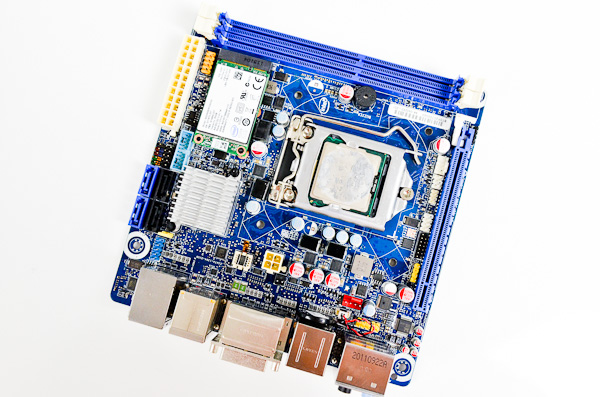
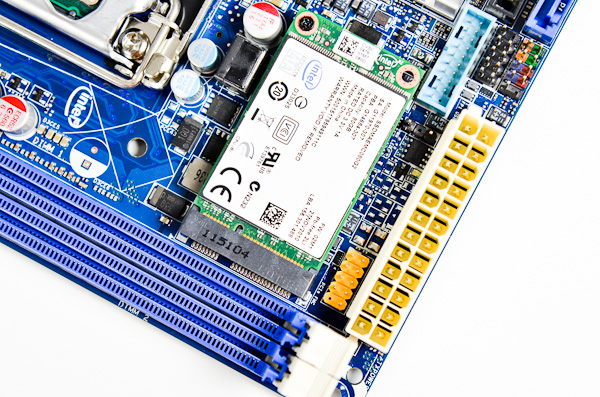
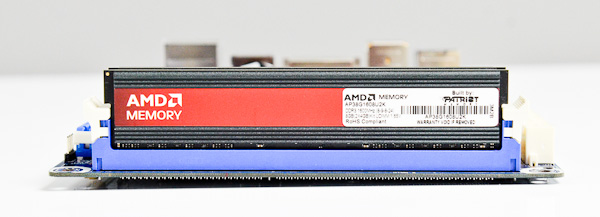
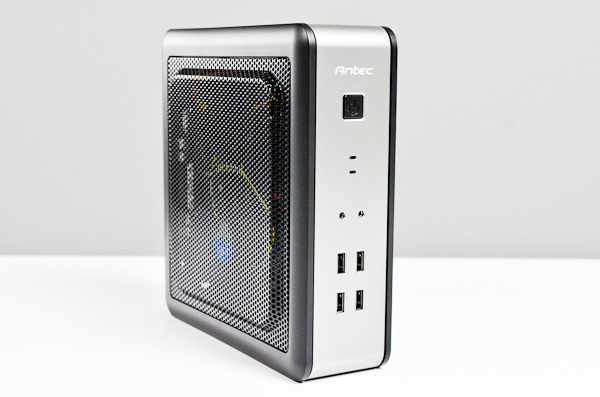
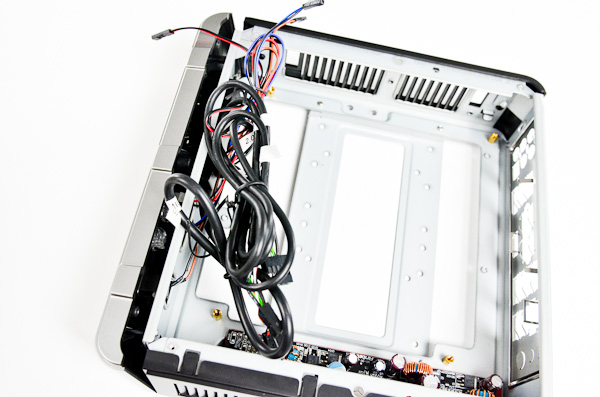
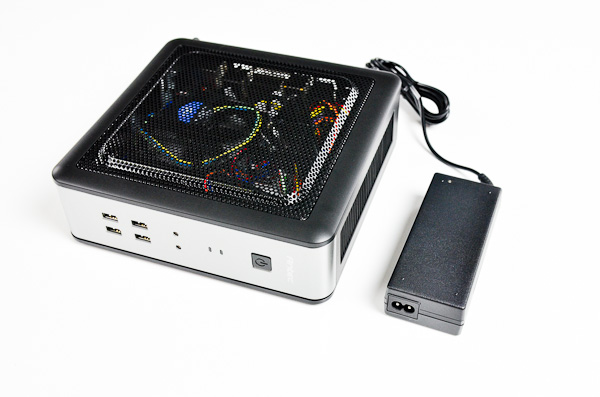














56 Comments
View All Comments
AFQ - Thursday, May 24, 2012 - link
Awesome theatre you got there man. Do a tour of your studio too plzzz!CeriseCogburn - Thursday, May 24, 2012 - link
The added on blue touch around the starlight night sky ceiling looks great in the one pic.Hopefully that settles anyone with claustrophobic tendencies.
On another note I could help laugh, shake my head, and exclaim aloud "What a nutball" - when I read the disappointment with the 23 watts pulled on the under clocked Intel system.
I see hundreds of watts of lighting and I suspect the projector is sucking down 300W to maybe 1200W playing a movie. ( I don't remember from reading the old build thread so long ago).
So that's what bothered me. I just don't get it. It appears people are feeling guilty nowadays using electricity for extravagance, so besides the electric bill (obviously moved very little as the theatre doesn't run all day and night), they need some outlet to massage their tender "I'm destroying the earth" propaganda that has been fed into their heads.
So saving 20 watts on some under clocked cpu while cooking 2000W otherwise on the rest of the show, is the key, so it seems.
sprockkets - Thursday, May 24, 2012 - link
I think he underclocked it just to save on noise, not power or energy. Projectors do this to - most have a lower setting to save on energy and fan noise.JNo - Friday, May 25, 2012 - link
True. But building an itsy bitsy mini ITX case when you could build a full size desktop as your HTPC running super cool and quiet with plenty of room for passive heatsinks and large slow fans if you need them seems a little daft to me. I mean, you have built an ENTIRE ROOM for your home theatre; it's not like a large PC tucket away somewhere is going to fill it....Death666Angel - Saturday, May 26, 2012 - link
Did you read the article? He clearly mentions that he doesn't want something big anymore since he moves the HTPC around a lot and doesn't need the space either.CeriseCogburn - Saturday, May 26, 2012 - link
Right, but in my other estimation to factor in it just shows the enthusiast geek that cannot get enough of the whole tweaking thing.I have a few close friends like this - where it's a hobby one could say and the endless parts and combos and predictions and tests and "disappointments" or pleasing results are what they go on about as well.
mnasub - Wednesday, May 30, 2012 - link
Recomiendo teléfono inteligente muy barato! Sólo necesita el euro 58.79 euros! Otro párrafo Parejas 3,2 Pulgadas Android2.2 WIFI dos Cámaras Bluetooth! Realmente genial! Usted puede mirar en: http://me2.do/IFP5KCmPurpose - Thursday, May 24, 2012 - link
I've been looking for a good case. The only one that I think might be better than the isk is the the Habey EMC 800 line.http://www.newegg.com/Product/Product.aspx?Item=N8...
However, optimally I think an HTPC should be about the size of a receiver. All the HTPC cases that size are haphazardly arranged and waste a ton of space.
Metaluna - Thursday, May 24, 2012 - link
I'd love to see more cases that are designed like slim A/V components. I have an Antec NSK 2480, which is a big bulky beast compared to most mITX cases. But, I can stack any other component, like my Bluray player, neatly on top of it. Furthermore, front-to-back depth is kind of irrelevant in an A/V rack, so other than being about twice as tall as I'd like, (and kind of fugly) the extra size doesn't really reduce my useable space all that much.Contrast that with these shoebox-style mITX cases that are so common. The form factor is kind of oddball. You can't stack much on them, and often there are vents in inconvenient places that make finding a place to put them difficult.
Khato - Thursday, May 24, 2012 - link
Can't help but be curious as to what might have brought you to Folsom? I'm assuming that it'd be the Intel campus here, but that seems somewhat odd as I'd have expected that all those sort a meetings would be at Santa Clara. I guess we do have better representation of certain groups here, especially on the graphics side. Did they keep you isolated to the nice and pretty FM3 that the rest of us in our drab grey cubicles are jealous of?